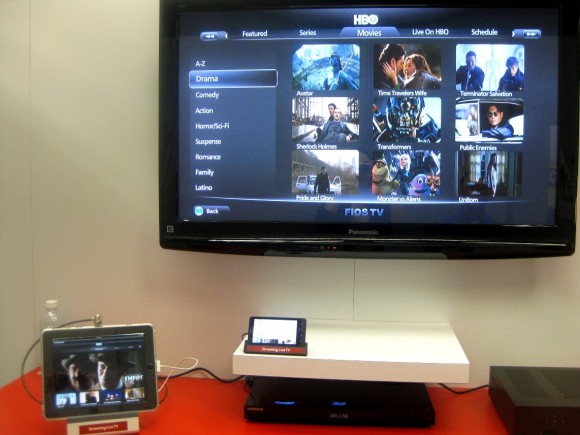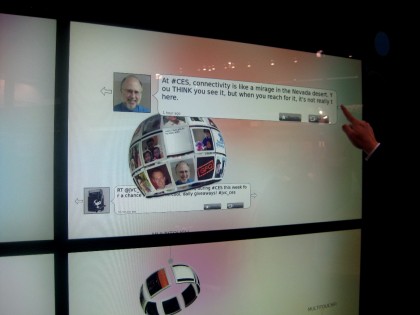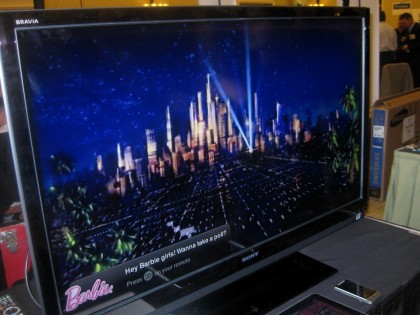
When Verizon launched FiOS TV, it launched it as a hybrid QAM/IP service – using QAM for broadcast television, and IP for VOD services and widgets. That’s about to change. Quietly, and very much behind the scenes, Verizon has been running an overhaul of its infrastructure in order to be able to deliver everything over IP. This is not IP as in the free-and-clear Internet, but IP as in a managed IP network used to deliver both multicast and interactive content.
In a meeting with Verizon exec Joe Ambeault here at CES, I learned that the company is very much committed to moving everything to its new IP platform. Consumers watching traditional FiOS TV should never see a difference, but by transitioning to IP, Verizon will have an opportunity to deliver its television service to a wide range of web-connected gadgets in the form of an app. In other words, FiOS TV will become just another service you buy in an app store – accessible across multiple screens and delivery platforms. In theory, consumers could even bring their own broadband to the table (FiOS or otherwise) and just layer FiOS TV on top.
The implications for this paradigm shift are a bit overwhelming, but in the short term, we can think of it just as a way to get access to content on more devices. If FiOS TV is an app, there’s no reason subscribers can’t access their shows from a tablet, smartphone, or laptop. The content doesn’t get delivered as part of a parallel TV-Everywhere system, but as a single IP solution that goes across every screen that consumers might want to use. We’ve seen hints of this in the new FlexView brand, but the model goes much further than anything we’ve seen deployed yet. As far as Verizon is concerned, the technical challenges have pretty much been solved. Again, in theory, consumers who don’t have access to FiOS Internet could get the television service added on to an existing non-Verizon ISP contract. That won’t happen any time soon, but the reasons are purely commercial, not technological. And the commercial situation is changing all the time.

